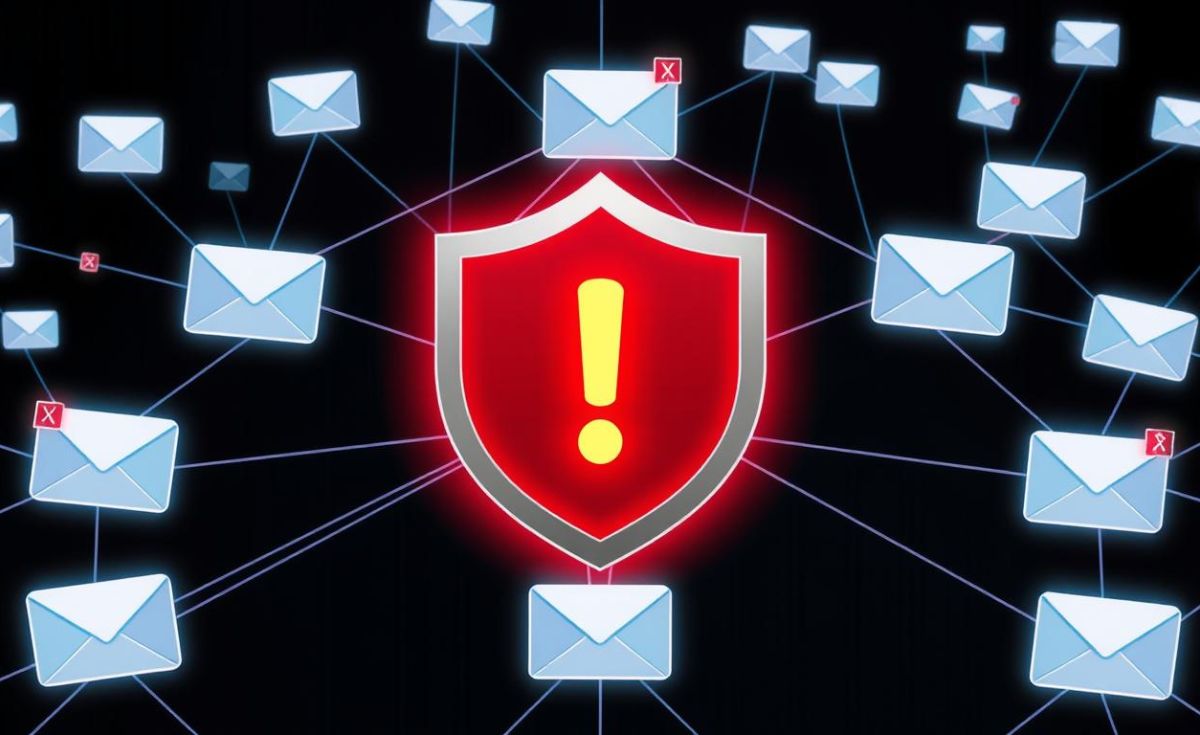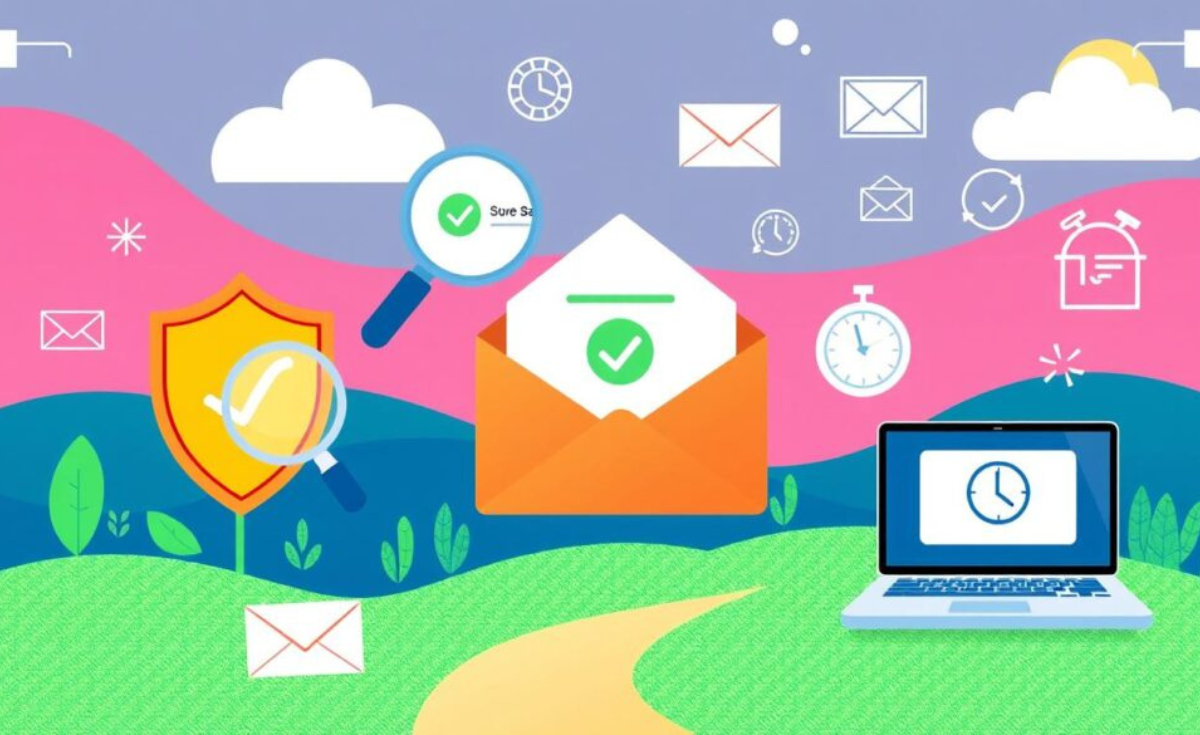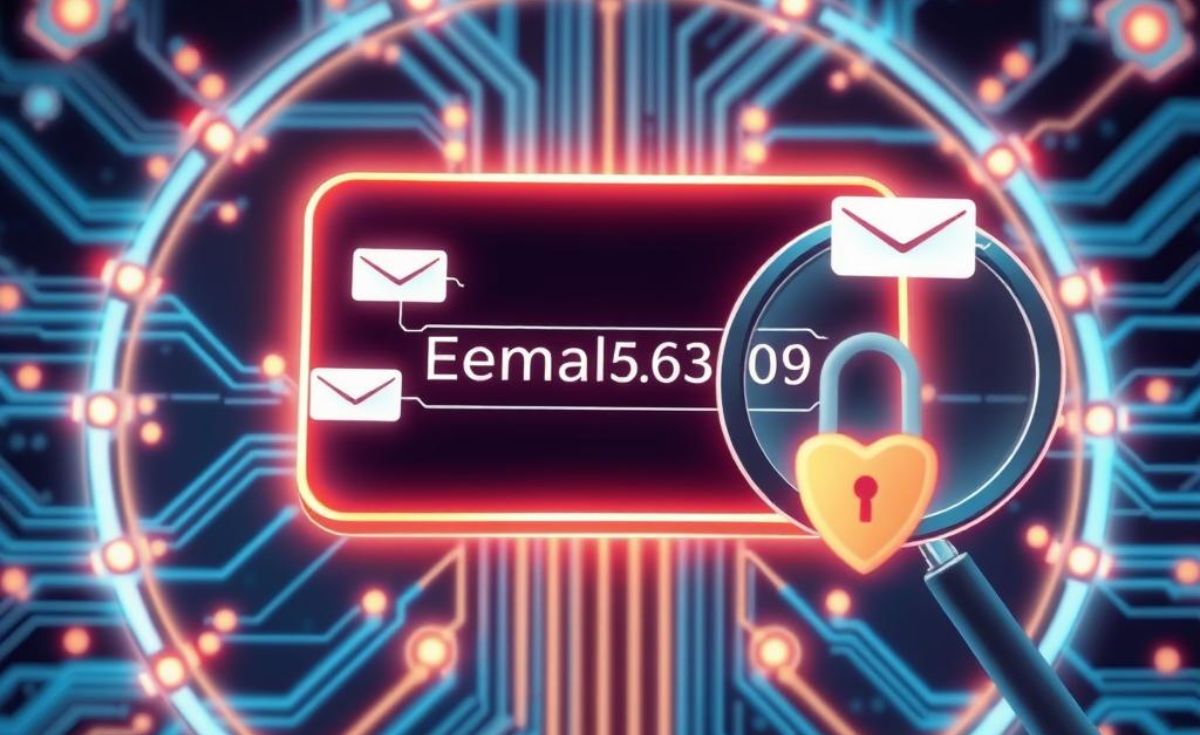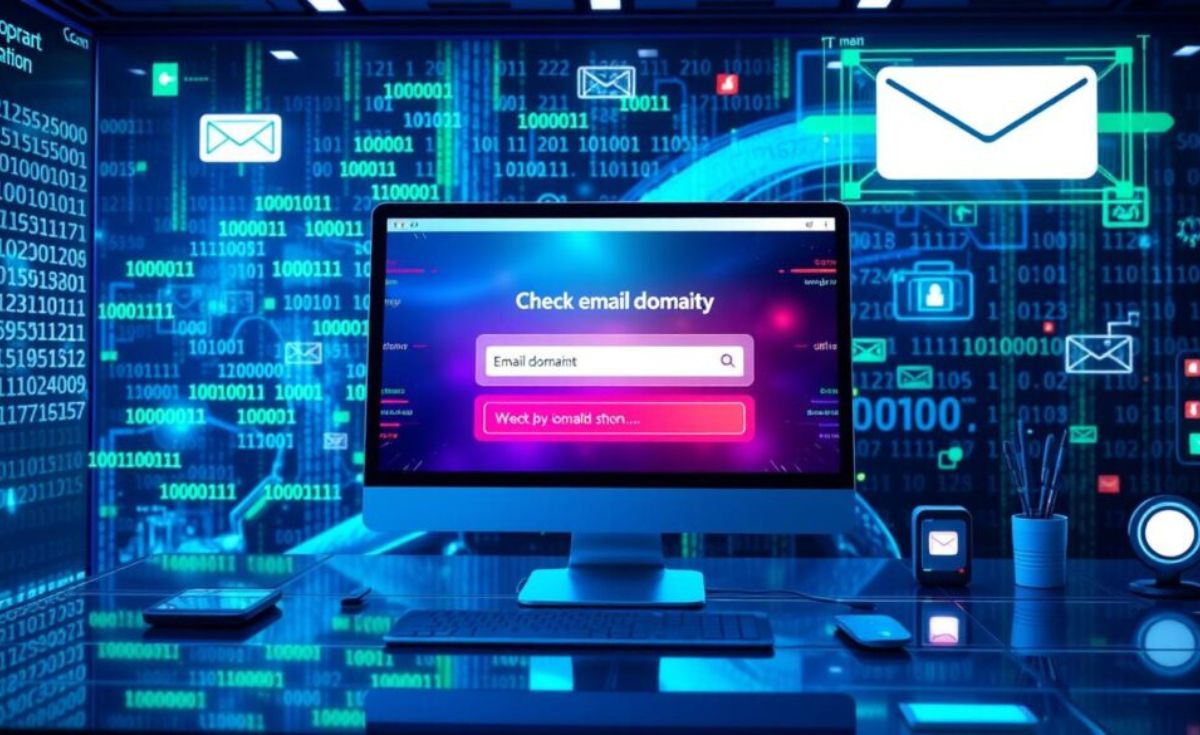Jessica was excited to grow her email list and reach out to new customers. But, her campaigns faced high bounce rates and delivery problems. She then learned the key role of checking email addresses against blacklists.
Jessica’s experience is common. Many businesses face issues with their email lists. In today’s world, where email is a key marketing tool, knowing about email blacklists is vital.
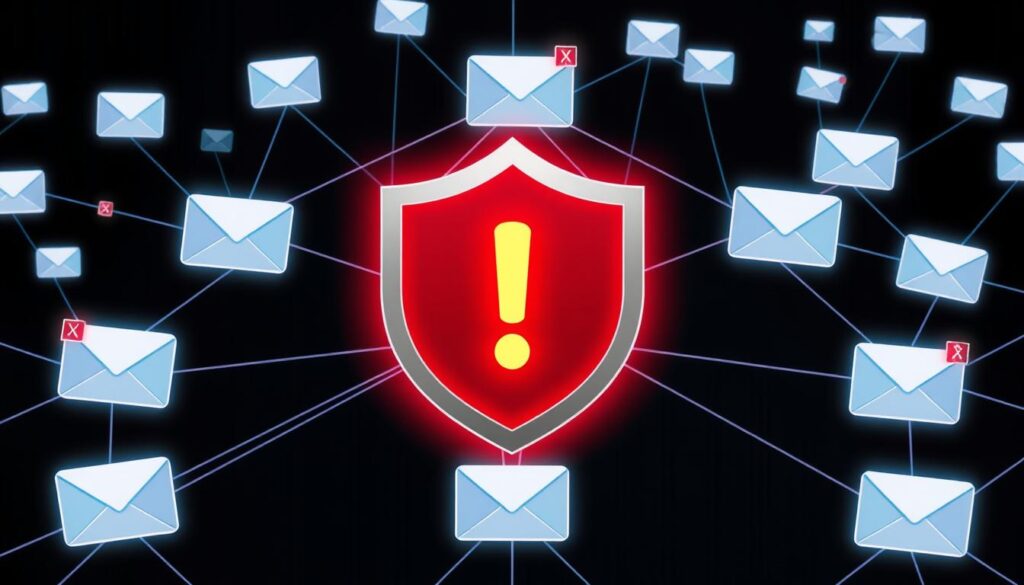
This guide will help you understand email blacklists and validate your contacts. We’ll cover everything from different blacklists to how to use them in your system. You’ll learn how to boost your email delivery and protect your reputation.
Key Takeaways
- Discover the importance of validating email addresses against blacklists to maintain a clean and deliverable email list.
- Learn about the different types of email blacklists and their impact on email deliverability.
- Understand the process of integrating blacklist validation into your email marketing system.
- Explore the best practices for maintaining a clean email list and avoiding blacklisting.
- Gain insights from industry experts on selecting the right blacklist provider for your business.
Introduction to Email Blacklists
Email is key for businesses and people today. But spam has grown, leading to email blacklists. These lists block unwanted emails. Knowing about email blacklists helps keep your messages safe and delivered.
What Are Email Blacklists?
Email blacklists are databases of bad senders and servers. They list spam, phishing, and harmful emails. Groups like anti-spam organizations keep these lists. They help block bad emails before they reach you.
The Importance of Validating Against Blacklists
Checking your email against blacklists is vital:
- Deliverability: Being on a blacklist means your emails might not get through. This hurts your chances of reaching your audience.
- Sender Reputation: A good reputation is key for email success. Blacklists can harm your reputation, making it tough to send emails.
- Legal Compliance: Laws in some places require stopping spam. This includes checking emails against blacklists.
By checking your emails against blacklists, you can:
- Improve email delivery
- Keep a good sender reputation
- Follow the law
Regularly checking your emails against blacklists helps. It ensures your messages are delivered, keeps your reputation strong, and follows the law.
Validate email address against blacklists
It’s key to keep your email list free from blacklisted addresses for successful campaigns. Checking your list against blacklists helps avoid delivery problems. It also protects your sender reputation and boosts your email marketing success.
Here are the steps to validate email addresses against blacklists:
- Identify Blacklist Providers: Learn about top email blacklist providers like Spamassassin, SpamCop, and Barracuda Reputation Block List. These services have big databases of known spam sources and IP addresses linked to bad activities.
- Integrate Blacklist Checking: Add blacklist validation to your email check process. You can do this manually or use third-party APIs that include blacklist checking.
- Automate the Process: Use automated tools or scripts to check emails against many blacklists at once. This makes managing your email list bigger and easier.
- Monitor and Update: Keep an eye on your email list for any new blacklisted addresses. Make sure your validation keeps up with blacklist changes to keep your list clean and deliverable.
By validating email addresses against blacklists, you protect your email reputation. This improves delivery and boosts your email marketing results.

| Blacklist Provider | Description | Validation Method |
|---|---|---|
| Spamassassin | Open-source spam detection and filtering software | API integration or manual lookup |
| SpamCop | Collaborative spam reporting and blocking service | API integration or manual lookup |
| Barracuda Reputation Block List | Reputation-based spam prevention service | API integration or manual lookup |
Common Email Blacklist Providers
Many groups keep email blacklists, each with its own rules and methods. It’s key to know the top blacklist sources when checking emails against blacklists.
Popular Blacklist Sources
- SpamAssassin – A widely-used open-source spam filtering platform that maintains a comprehensive blacklist.
- Spamhaus – One of the largest and most respected blacklist providers, offering multiple blacklist databases.
- SURBL – Focuses on blacklisting URLs and domains associated with spam and phishing.
- URIBL – Provides blacklists for suspicious URLs, domains, and IP addresses.
- Barracuda Reputation Block List – A blacklist maintained by the Barracuda Networks security company.
Choosing the Right Blacklist Provider
When picking a blacklist provider, think about these points:
- Coverage – Make sure the provider’s blacklist covers a wide range of spam sources.
- Accuracy – Look for providers known for their reliable and up-to-date blacklists.
- Integration – Pick a provider whose blacklist works well with your email validation system.
- Cost – Check the prices and find the best deal for your business.
| Blacklist Provider | Coverage | Accuracy | Integration | Cost |
|---|---|---|---|---|
| SpamAssassin | Extensive | High | Moderate | Free |
| Spamhaus | Comprehensive | Excellent | Easy | Subscription-based |
| SURBL | URL-focused | High | Moderate | Subscription-based |
| URIBL | URL-focused | High | Moderate | Free |
| Barracuda Reputation Block List | Extensive | High | Easy | Subscription-based |
Integrating Blacklist Validation into Your System
Checking email addresses against blacklists is key to a clean email list. It might seem hard to add this to your email system, but it’s doable. Here’s a guide to make it easy.
First, find the best blacklist providers. Look for ones that are reliable and cover a lot of addresses. After picking them, get the API keys or credentials needed to use their data.
- Set up a real-time validation process to check emails as they’re added. This stops bad emails from getting in your list.
- Use batch validation to check your list often. This keeps your list clean and helps your emails get delivered.
- Make clear protocols for what to do with blacklisted emails. You might quarantine them, tell the user, or remove them.
Adding blacklist checks to your email system boosts your reputation. It lowers the chance of delivery problems and makes sure your emails get to the right people. With a good system, your email list stays healthy, leading to better results.

| Integration Type | Description | Benefit |
|---|---|---|
| Real-time Validation | Checks email addresses against blacklists as they are being added to your system | Prevents problematic addresses from entering your email list |
| Batch Validation | Periodically reviews your existing email list to identify newly blacklisted addresses | Maintains a clean and deliverable email list over time |
| Blacklist Handling Protocols | Establishes clear procedures for managing blacklisted addresses, such as quarantining or removing them | Ensures a streamlined and consistent approach to address validation and list hygiene |
Best Practices for Email Blacklist Validation
Keeping your email list clean and reliable is key for good email marketing. It’s important to check your email addresses against blacklists often. This helps make sure your messages get to the right people and avoids delivery problems or damage to your reputation.
Frequency of Validation
How often you check your email list against blacklists depends on your needs and how often you send emails. It’s a good idea to check at least once a month. If you send a lot of emails or update your list often, you might need to do it more, like weekly or daily.
Handling Blacklisted Addresses
What to do when you find an email address on a blacklist is important. Here are some steps:
- Remove blacklisted addresses from your mailing list to prevent delivery problems.
- Try to validate email address against blacklists again after a while to see if it’s off the list.
- Get in touch with the owner of the blacklisted address to find out why and fix it.
- Use strict email list cleaning practices to avoid getting blacklisted again.
By following these steps, you can keep your email list healthy and make sure your messages reach the right people.
Conclusion
Checking your email addresses against blacklists is key for a strong email marketing plan. This guide helps you boost your email delivery, protect your reputation, and get better results.
Keep your email lists clean by checking them against trusted blacklists. Make sure your system checks for blacklisted addresses. Follow best practices to manage these addresses well. This way, you avoid problems and make sure your emails get to the right people.
Your email marketing success depends on a good email list and building trust with your audience. Focus on validating email addresses and watching blacklists. This keeps your emails reliable, trustworthy, and effective in reaching your customers and growing your business.
FAQs
1. What does it mean to validate email addresses against blacklists?
Email validation against blacklists involves checking whether an email address or domain is listed in any known email blacklists. These blacklists are databases that track emails or domains associated with spam, fraudulent activities, or poor email practices. By validating emails against these lists, you can identify and avoid sending to problematic addresses, which can improve your email deliverability and protect your sender reputation.
2. Why is email blacklist validation important for email deliverability?
If you send emails to blacklisted addresses or from a blacklisted domain, your emails may be blocked or marked as spam by recipients’ email providers. This can negatively affect your email deliverability rates, meaning fewer emails will reach your audience’s inbox. Regularly validating your email list helps prevent this issue, ensuring more successful deliveries.
3. How does blacklist monitoring help protect my sender reputation?
Sender reputation is a score used by email service providers (ESPs) to determine how trustworthy your email sending practices are. If you repeatedly send to blacklisted addresses, your sender reputation can suffer, leading to higher rates of email bounces, spam flagging, or being blocked entirely. Monitoring blacklists and removing flagged addresses can help maintain a good sender reputation.
4. How often should I validate my email list against blacklists?
It is a best practice to validate your email list regularly, especially before launching large email campaigns. How often depends on the size and frequency of your campaigns, but a monthly or quarterly validation is generally recommended. If you notice high bounce rates or spam complaints, more frequent validation might be necessary.
5. What are the common types of blacklists used for email validation?
There are various types of email blacklists, but the most common ones include:
- DNS-based blacklists (DNSBLs): These lists are often used by email servers to block emails from known spam sources.
- Spamhaus: One of the most widely referenced blacklists, it tracks domains and IPs involved in sending spam.
- Barracuda: A popular blacklist used by organizations to prevent email abuse.
- SORBS (Spam and Open Relay Blocking System): It tracks IP addresses involved in sending spam, phishing, or hosting malware.
6. How do blacklists affect my email marketing strategy?
A clean and validated email list not only ensures better deliverability rates but also improves your engagement rates with recipients. By avoiding blacklisted addresses, you’re less likely to encounter bounce rates, spam complaints, and blocked emails. This helps increase the success of your email marketing strategy and enhances your relationship with your audience.
7. What happens if my domain or IP is blacklisted?
If your domain or IP address is blacklisted, your emails may be blocked or routed to the spam folder. This can severely damage your email campaign’s effectiveness and reduce your engagement rates. To resolve this, you’ll need to identify the blacklist where your domain or IP appears and follow their procedures for removal. Additionally, reviewing your email practices and resolving issues that caused the blacklisting is crucial for preventing recurrence.

